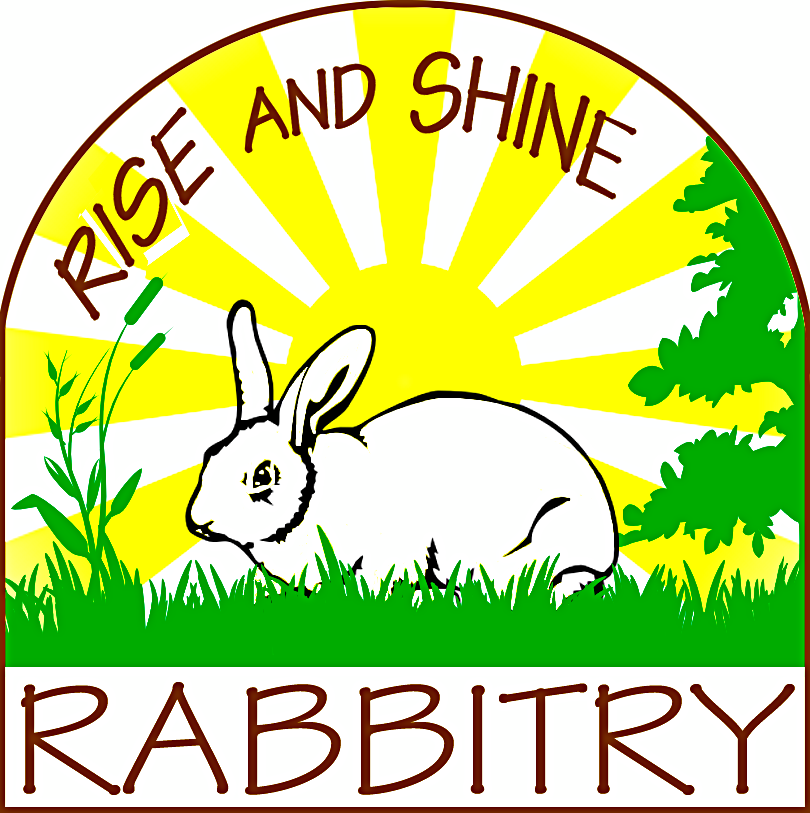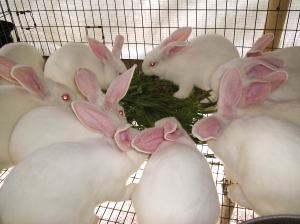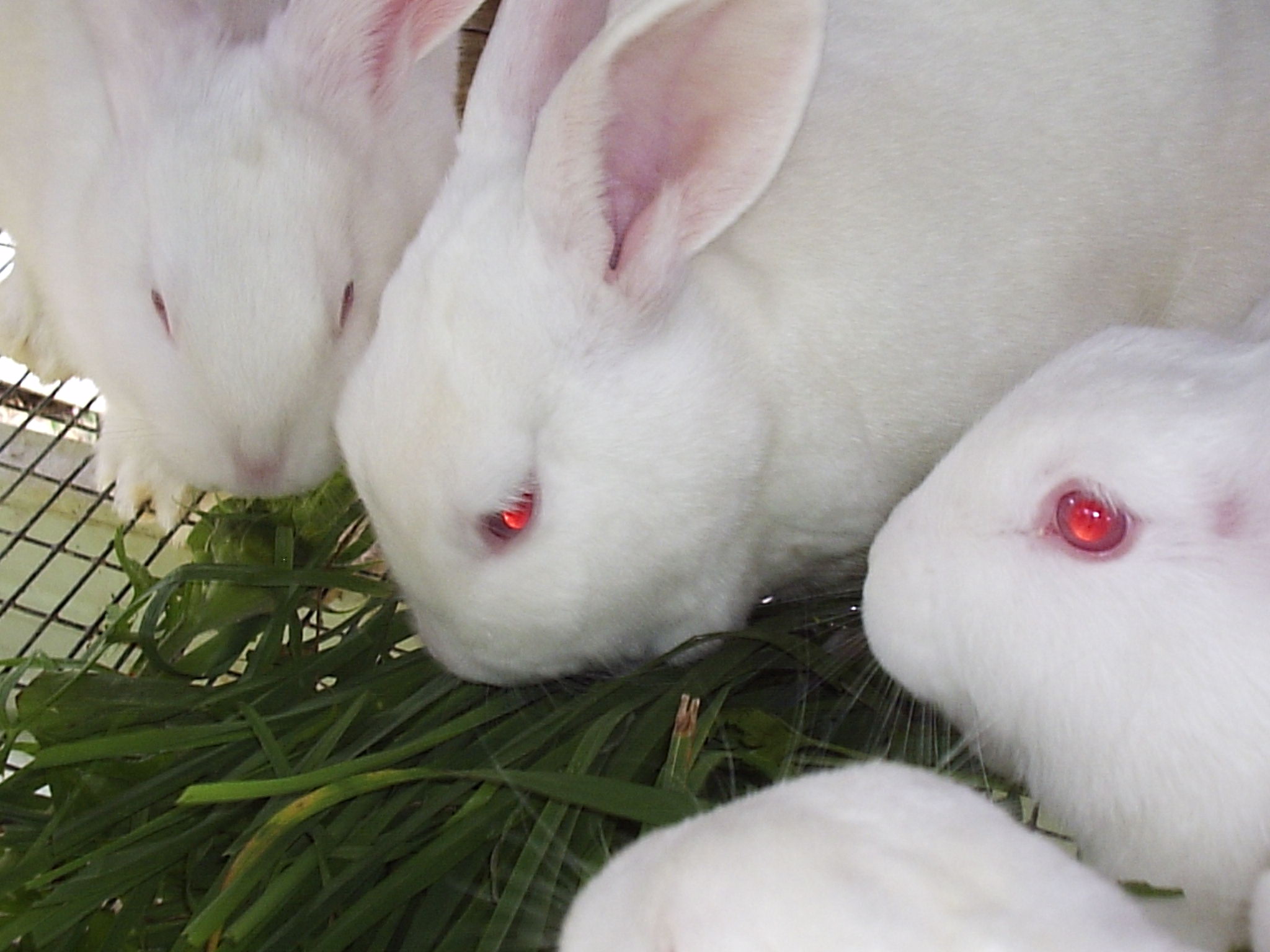Category Archives: Uncategorized
2024 COMFREY SEASON
We are done shipping our preorders and are shipping orders as they come in. Hope to help you with your comfrey needs in 2024!
RABBITS URINE COLOR
The normal color of rabbits urine is a pale to dark yellow. Often the rabbits urine can change to become orange, pink, red, or brown.
There is no reason to panic when you first see a change in the color of your rabbit’s urine. A red urine color may cause you to panic!
This condition is called red urine. This change in color can happen in healthy rabbits as well as those who are sick.
This change of color in the rabbits urine can be due to organic compounds and plant pigments in the rabbits food source. This can happen more often in rabbits being fed a natural food source diet.
Stress or even the change of season can cause discoloration of the urine. Especially the first cold snap of the winter or during the summer were heat stress to the rabbit can result in red urine.
Dehydration will concentrate the urine, causing it to become darker in color and intensifying any pigmentation that is present.
If the rabbit is on any antibiotics this will also increase the levels of pigments in the urine.
Most often the time the change in urine color is not a medical issue. If a rabbit has certain health issues related to the kidney, liver, or bladder this will also cause the same color change in the rabbits urine. If the rabbit has been straining to urinate, attempting to pee more often, or urinating in smaller quantities such as only a few drops at a time a bladder problem is likely.
When naturally feeding rabbits with a large amounts of plants in their diet, these natural compound’s and pigments high in beta – carotene, such as sweet potato, squash, carrots, melons, spinach and lots of other dark leafy greens can cause this change in urine color. Ingestion of pine or fur needles can also have the same results.
This change of urine color is unpredictable as two rabbits on the same diet can have different results. One rabbit may have yellow urine and the other orange. Most of the times when this color change is from the diet it will only last a few days but I have had a few rabbits take up to a month.
So do not panic and always pay attention to your rabbits behaviors, as spending time with your rabbits you will notice any issues and be able to take care of any issues soon than later.
RAISING RABBITS ON WIRE
I raise my rabbits on wire in wire cages. The floor wire is 1″ x 1/2″ and sides are 1″x 2″. I have always had happy, healthy rabbits. I was ready to write up a post on raising rabbits on wire floors, but Shiny Satins Rabbitry has a few great posts on this subject and I could not agree more with what they have written. So go and check it out!
I know this is controversial subject and some rabbit raisers will disagree with wire floors. I do feel that some breeds of rabbits would do better on slatted floors such as Rexes as they are known to have less fur on their hocks and more prone to sore hocks.
These links were shared with the permission of Shiny Satin Rabbitry
http://shinysatins.weebly.com/wire-floors.html
50 RABBIT FACTS
1 Baby rabbits are referred to as kits.
2 Either cooked or raw, rabbit meat freezes very well. https://riseandshinerabbitry.com/domestic-rabbit-recipes/
3 Female rabbits are referred to as does
4 A Rabbit’s teeth never stop growing
5 Male rabbits are referred to as bucks
6 In the wild rabbits live in groups called warrens
7 Some rabbits can breed at as early as 3 to 4 months old
8 Rabbits are not rodents, Rabbits are classified as lagomorphs
9 Today’s domestic rabbit is descended from the European Rabbit
10 Rabbits do not vomit
11 A rabbit’s gestation period is approximately 31 days https://riseandshinerabbitry.com/2012/01/19/basics-of-raising-meat-rabbits-on-the-homestead-part-1/
12 The backbone of a rabbit is very fragile and can break easily when handled improperly or dropped on its back
13 Domestic rabbits are born without fur
14 Rabbits are generally the most active during the evening and early morning
15 Rabbits are nearsighted
16 Rabbit pelts have been used for many years as fur and in the manufacture of felt https://riseandshinerabbitry.com/2012/01/22/tanning-rabbit-pelts/
17 Rabbits can pick up diseases from their own droppings.
18 A rabbit has five toenails on its front two paws and four toenails on its back feet.
19 Rabbit shows are a good place to see a wide variety of rabbits https://riseandshinerabbitry.com/2012/10/21/what-breed-of-rabbit-to-raise-for-meat/
20 A small amount of Apple Cider Vinegar added to the rabbits drinking water will increase their appetite https://riseandshinerabbitry.com/2012/01/26/apple-cider-vinegar-for-rabbits/
21 Hundreds of years ago rabbits were often released on deserted islands in hopes of giving shipwrecked sailors a reliable food source
22 Some places in the world have had serious trouble with rabbit overpopulation
23 There are over 150 recognized rabbit coat colors and varieties
24 The average heart rate of a rabbit ranges between 130-325 beats per minute
25 Rabbit meat is lower in fat, cholesterol and calories than chicken, pork and beef https://riseandshinerabbitry.com/2012/04/06/10-reasons-why-you-should-eat-rabbit-meat/
26 Rabbits only sweat on the pads of their feet
27 A rabbit will eat its own cecotropes night droppings and they are a valuable source of protein
28 A group of kits from the same mother are called a litter
29 Domestic rabbit kits are born with their eyes shut and will open when they are about 2 weeks old
30 It has been estimated that in Australia rabbits destroy around $600 million worth of crops each year
31 Throughout history the rabbit has been seen as a symbol for fertility
33 Not all rabbits will breed like rabbits https://riseandshinerabbitry.com/2012/08/11/rabbits-unwilling-to-breed-causes-and-cures/
34 In ancient Egypt rabbits were used as sport for dog racing
35 The scientific name for the rabbit is Oryctolagus cuniculus
36 Domestic rabbit meat is all white meat https://riseandshinerabbitry.com/2011/10/15/health-benefits-of-rabbit-meat/
37 Rabbits can suffer heat stroke https://riseandshinerabbitry.com/2012/04/22/tips-for-raising-rabbits-in-the-heat/
38 Rabbits have 28 teeth.
40 Rabbits were an important home meat supply during World War II https://riseandshinerabbitry.com/2011/07/16/hello-world/
41 Some rabbits are raised specifically for their fur or fiber, such as Rex or Angora rabbits
42 A place were you keep your rabbits as a business or hobby is commonly called a rabbitry https://riseandshinerabbitry.com/2012/05/06/making-money-with-rabbits/
44 Millions of pounds of rabbit meat are consumed each and every year https://riseandshinerabbitry.com/2012/05/10/cooking-rabbit-hints-and-tricks/
46 Rabbit droppings make an excellent garden fertilizer https://riseandshinerabbitry.com/2012/03/31/the-benefits-and-uses-of-rabbit-manure/
47 Rabbits can see behind them, but they have blind spot in front of their face.
48 A group of rabbits is called a herd
50 Predators can literally scare a rabbit to death https://riseandshinerabbitry.com/2012/04/14/the-rabbits-senses/
RADIO IN THE RABBITRY
Spoil and keep your rabbits safe by giving them a radio!
Playing a radio in your rabbitry will benefit your rabbits by making them more accustomed to unusual sounds and less likely to panic and hurt themselves by running around the cage .
Rabbits being prey animals, are generally timid and easy to startle. A sudden kick with its hind legs or excited run around the cage is all it takes to snap the rabbit’s backbone and render it paralyzed. Because the rabbits will be used to other noises they will be less excitable and less stressed thus giving you more relaxed, happy, healthy rabbits.
I have a friend who raises fancy (expensive) chickens and always had a radio playing day and night to keep predators away. He never had a problem until one night his wife turned off the radio. The next day every one of his chickens was gone.
You will also enjoy the music when you are feeding, cleaning, grooming, and just hanging out with the rabbits.
At night I change the station to talk radio so predator’s and even humans may think someone is out in the rabbitry. Even a police scanner would work.
So let your rabbits jam out to your favorite tunes or mellow out with some classical background music.
MEDICINAL HERBS FOR RABBITS – With pictures
This is a copy of our older post but with pictures in a PDF format. Thanks, to Muril Stone for all the hard work!
This is a link to our original 2012 post
Rabbit Terminology
 Here is a quick list of rabbit terminology you should know when raising rabbits.
Here is a quick list of rabbit terminology you should know when raising rabbits.
I will be constantly adding to this list if you see something I missed please Email me riseandshinerabbitry@hotmail.com and I will add it in.
Abscess- collection of pus caused by infection
Agouti- A color pattern where each individual hair alternates dark and light bands.
Albino- a white haired rabbit with pink eyes.
Belled ears- Ears that lop over or droop, this is sometimes caused in growing rabbits in hot weather.
BEW- blue eyed white rabbit.
Birthing- see kindling
Breed- Group of rabbits that share the same characteristic’s such as color, size, and fur type
Breeding- When you mate rabbits.
Buck- A male rabbit.
Coccidiosis- Coccidiosis is considered to be the most common disease in rabbits and is very hard to cure. Coccidiosis is caused by a protozoan. There are nine species of this protozoa that can affect rabbits, only one affects the liver, while the other 8 affect the intestines. It seems that younger rabbits have a higher risk for this disease. The disease is spread as the eggs from the protozoa are shed in the rabbit feces, which is then transmitted to other rabbits.
Condition- the general health and appearance of a rabbit.
Colony raising- This system of management is the raising of multiple rabbits together in one area inside or outside.
Crossbreed- breeding rabbits of different breeds.
Culling- Culling is not just the killing of rabbits, but with that being said you do not want to breed or sell to potential breeders, bad rabbits these are to sold as pets only. Save The Best Eat The Rest!
Dam-The mother of a particular rabbit.
Dewlap- Fold of loose skin under the chin of female rabbits.
Doe- A female rabbit.
Dressed- Skinned and prepared for cooking.
Ear canker- Scabby conditions in rabbits ears caused by ear mite.
Enteritis- Is a Intestinal disturbance in domestic rabbits this is caused by stress and or other underlying diseases.
Foster- Fostering rabbit kits is the act of placing newborn baby rabbits with a different mother doe.
Gestation period- The period of time between breeding and kindling. Usually 28 to 31 days.
Heat stroke- Illness caused by exposer to high temperatures
Hock-First joint of the hind leg of the rabbit.
Hutch- Rabbit housing
Hutch card- Information card on cage that identifies the rabbit and contains breeding information
Jacket off – this means the rabbit will be skinned
Kits- A bunch of bunnies.
Kindling- when the doe is giving birth to young.
Lagomorph- There are about eighty species of lagomorph which include thirty species of pika, twenty species of rabbits and cottontails, and thirty species of hares.
Litter- group of baby rabbits born in one birth
Line breeding- this breeding system is usually the most satisfactory. Line breeding itself is a form of inbreeding, but is less intense. In line breeding, rabbits are mated together which are both descendants from a particular rabbit, but which are as distantly related as possible.
Loin-
Malocclusion- The misalignment of teeth, this is genetic and rabbits that have this should not be bred.
Molt- Shedding fur
Mucoid enteritis- Disease that usually affect’s young rabbits, symptom’s are loss of appetite, increased thirst, and jelly like diarrhea.
Nest box- A box to provided for the doe so that she can make a nest and have kits in.
Nesting- when the doe starts to put nesting material in her box.
Outcrossing- is the breeding of two rabbits from unrelated lines.
Palpate- Feeling for the developing embryos within the abdominal cavity of the pregnant doe. This is said to be the most reliable way to determine pregnancy in the domestic rabbits.
Pedigree- Written record of an animals ancestors, going back at least three generations.
Pelt- skin and fur of a rabbit to be tanned.
Purebred- parents are of the same breed
Rabbitry- placed were rabbits are kept
REW- Red or ruby eyed white
Saddle- the meaty hind body and legs
Sire- The father of a particular rabbit.
Sired- fathered
Sore hock- a ulcerated condition of the undersurface of the hind feet of a domestic rabbit. Cause by sparse hair on the hocks, this could be genetics or some breeds like rexes have this naturally. Dirty wet conditions.
Tattoo- permanent mark in ear to identify rabbits.
Test breeding- At about two weeks following breeding, the doe is returned to the buck’s cage. If she is bred, she will whine, growl, and flatten herself against the cage floor. She will not be happy to the buck’s advances. This is often the case, but there are does who will breed if pregnant and those who will refuse the buck when they are not.
Trio- 2 does and 1 buck. They are usually matched for breeding to begin or expand a rabbitry.
Type- General physical make up of a rabbit.
Warren- Warrens are a large fenced enclosed area were rabbits can burrow and live as naturally as possible. This is equal to free ranging chickens.
Weaning- When you take young rabbits away from the mother and their transition to solid food.
Wool block- blockage in the digestive tract cause by fur
WINTER WATER WOES at the rabbitry
Most people have a winter sport that they enjoy, like skiing, snowmobiling, and snowshoeing. Here at the rabbitry we have water-crock thawing. Taking the hard water out and putting the liquid water in. This is something that you have to deal with when raising rabbits in a cold climate.
The picture on this post was the beginning of the ice crock pile of 2013! The hardest part of raising rabbits in the winter is keeping them watered. As long as you give them fresh water twice a day, they will do fine.
I use water bottles most of the time except in the winter. This is when I switch over to metal crocks (metal does not crack due to the expanding ice and thaws easy).
In the past I would still use water bottles in the winter. By having lots of extras I would swap out the frozen ones a few times a day. You can even cover or wrap the water bottles to insulate them to slow down the freezing process. These can be made by the DIYer from old wool socks, sewn up from old sweaters, or knitted or crocheted from yarn. You can also buy these covers http://www.homeandroost.co.uk/product/scratch-newton-water-bottle-snug-cover/ . During this time I found that the metal tubes freeze too quickly and the water in the bottles will still not be frozen but the water is not available to the rabbits because of the frozen tube, so I switched to crocks
There is now some heated water bottles available, this looks like it would work if you only have a few rabbits. Heated water bottle If you do like using water bottles in the winter I have seen a setup with a metal barrel with a light hanging down inside the barrel to keep the extra bottles thawed and in the rabbitry here is the You Tube link
My personal favorite is the metal crock they are easier to thaw out than plastic or ceramic, Aluminum Crock http://www.tractorsupply.com/en/store/home-rig-housetrade%3B-rabbit-feeder-pan?cm_vc=-10005
It takes me less than a 5 gallon bucket of hot water to thaw all of my crocks. I drop a few crocks in the hot water and the ice pops out, I put the ice in a separate bucket to make the hot water last longer. I wear dishwashing gloves and my hands stay warm and dry. If my rubber gloved hands do get cold, by putting them in the warm water they warm up quick. By putting the ice in a bucket I keep the extra moisture out of the rabbitry. I will dump the removed ice blocks were I want the extra water in the spring thaw.
I have a method to my crock watering in the winter. I only have to unthaw my crocks fully, once a day usually at night. After de-icing in the evening, I fill the crock 1/2 full they will drink their fill before it freezes. In the AM I fill the crocks to the top (at this time there is a small layer of ice on the bottom of the crock left from the evening water) and again they drink their fill. Later in the day my wife makes her rounds with hay topping off the crocks again. Then the process starts again in the evening as I de ice and water again. I like this method and works great for me. Some people use hammers to smash the ice out of the crocks (technically know as clunking), or just have lots of spare crocks bringing the frozen ones into the house or basement to thaw.
We can loose power here in the winter, sometime for as long as a week. During this time I can still heat water to thaw my crocks with propane or wood. I have also thawed the metal crocks with a small propane torch, by heating up the bowls bottom and side slightly the ice falls right out.
If you have a well you need power to pump water to your house. I think ever homestead needs a well bucket you will never have to worry about power. I have 2 wells. 1 shallow well and 1 deep, this bucket is awesome in my shallow well https://www.lehmans.com/p-1384-lehmans-own-galvanized-well-bucket.aspx
I have made one for the deep well out of PVC, just be careful of the pump wires when using this works same as the other bucket just narrower for the well casing http://www.truthistreason.net/how-to-diy-well-bucket-using-pvc-pipe
Here is a great idea for making a solar thawing Hot box http://tinyhomesteaders.com/2012/11/21/the-solar-hot-box-melting-waterers-efficiently/
I have used some black rubber crocks that I can pop the ice out of I liked these, but the rabbits liked to chew on them and they only lasted a few years. http://www.tractorsupply.com/en/store/fortex-round-feeder-1-2-gal-capacity-black
I am not a big fan of the auto watering setup I have used these in the past and even in good weather had issues with them not working properly. You do not know how much each rabbit is drinking this helps you to observe and know if a rabbit is “off”. There are many breeders who love this setup, I am just not one of them. They now also have the ability to keep fresh water to your rabbits all year round. Bass equipment sells a couple different systems to freeze proof a watering system. One has a bucket with heater and circulating pump or heat cables to run through pipes in an auto watering set up. Heated auto water setup I have even seen some homemade setups that do work in the winter.
There are some breeders I know in Alaska, they run their rabbits in a colony setting for the colder months and use a regular large metal chicken waterer with a base heater and this has worked for them just fine. In the spring they return their rabbits to the hutches and cages.
I have heard that by adding two or three drops of glycerin into the rabbit’s water bottle. This sweet syrup will prevent the water from freezing as fast. Medical glycerin can be purchased from a pharmacist while vegetable glycerin can usually be purchased from a grocery store’s baking department. Just make sure you rabbit continues to drink the water with this added flavor included. I have never tried this method, if anyone has I would love to hear the results. I do not like the added sugar to their diet I would rather take the time to thaw my crocks.
Your diligence in making sure your rabbits have fresh water will keep your rabbits happy and healthy. Rabbits will not eat if there is no water available, and in the winter they need the extra food calories to keep warm. You should make sure to provide fresh ice free water at least 2 times a day once in the morning and again in the evening, preferably more often if you can. If you have any other ideas or comments please let me know as I update my posts all the time. Here is a link to my winter care for rabbits post https://riseandshinerabbitry.com/2012/02/20/winter-care-for-rabbits/
JOIN THE RABBIT REVOLUTION! like us on face book, subscribe to the web page to get new information as it is posted. Raising Meat Rabbits To Save The World!



